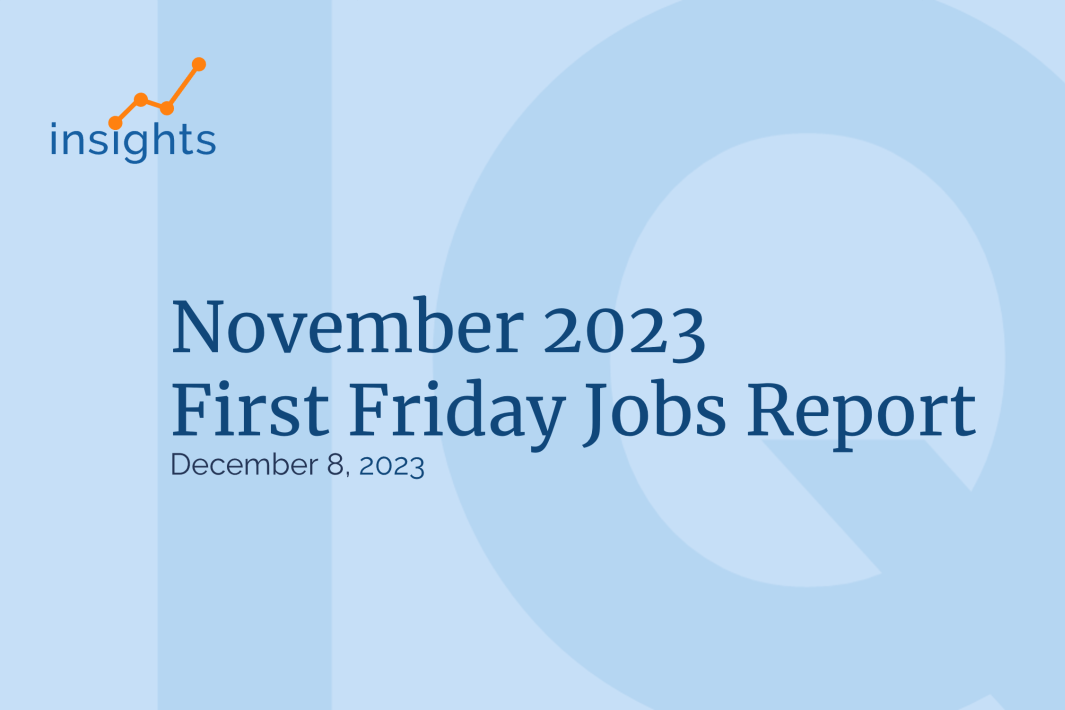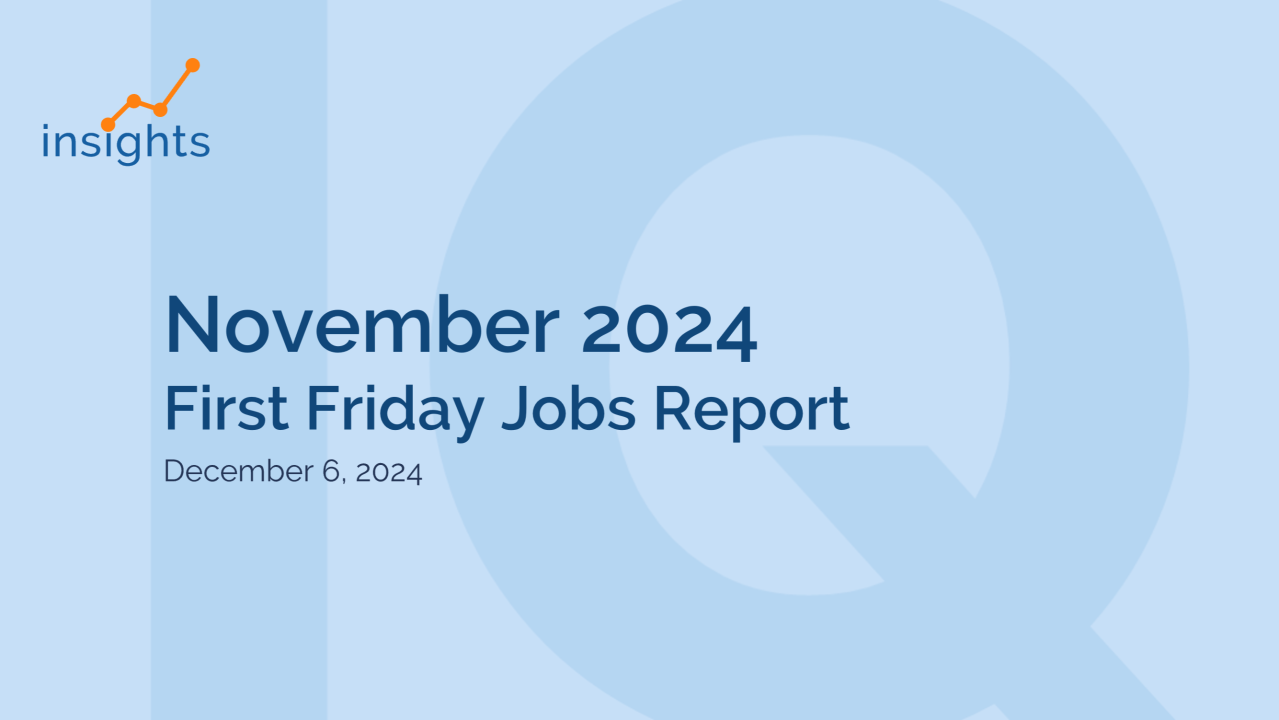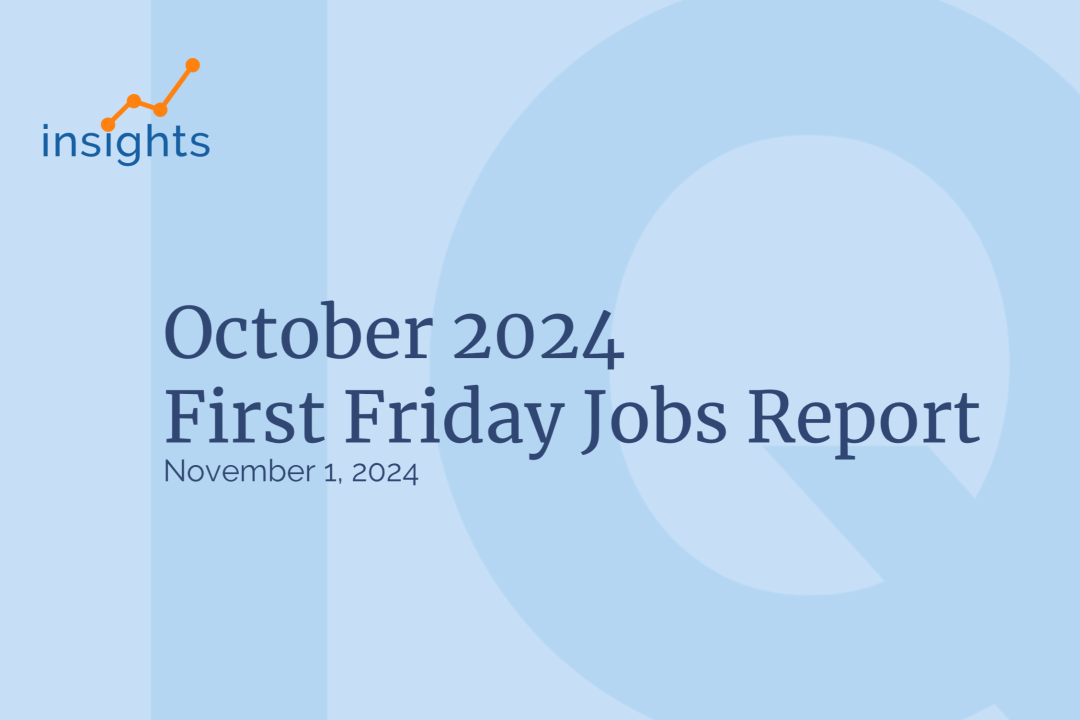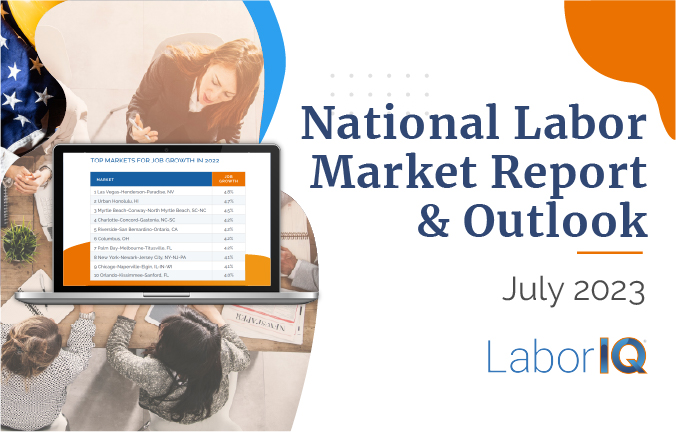This week, we are breaking down the latest "First Friday" jobs report. In November, job gains came in above expectations and wage gains continued to moderate. The unemployment rate ticked down, suggesting the labor shortage is still a challenge for U.S. businesses.
The overall strength of headline numbers is not felt by all industries. Businesses are still adding new jobs, albeit not at the pace we saw over the past couple of years.

Labor market shows overall strength, but hiring is static in many industries
U.S. businesses added 199,000 new jobs in November, just above economists’ expectations of around 185,000.
The last several jobs reports have had a few recurring themes.
Once again, job gains have been concentrated in a handful of industries. To some extent, this helps explain why actual experiences in the labor market have varied for businesses and employees. Government and Healthcare accounted for two-thirds of all jobs added.
While the majority of industries aren’t adding jobs at the pace of Government and Healthcare, they aren’t seeing job losses on a large scale either. The labor market and hiring activity have cooled, but the slowdown hasn’t led to an increase in the unemployment rate and job losses.
Downward revisions to previous months’ reports have been the norm as we close out 2023. September and October’s totals were revised downward by 35,000 jobs. These revisions probably reflect more of the reality that many are experiencing in the labor market.
📊Job Gains
The 199,000 job gains in November were bolstered by the end of the auto and entertainment worker strikes. While hiring has cooled, November's total was fairly robust.
We've added 2.5 million jobs so far this year, averaging 232,000 jobs gained per month. The labor market has added new jobs 35 months in a row, and a positive December will mean three straight years of growth.
🏭Industries
By most metrics, the labor market has remained incredibly strong this year. The challenge is that not everyone is experiencing what we see in the top-level stats and headlines.
In November, two out of every three jobs added were in Government or Healthcare. And when you add back in the 50,000 jobs of striking auto manufacturing and entertainment workers, nearly 90% of jobs added were in just four sectors.
Most industries aren’t adding jobs at a rapid pace – they’re treading water. But the good news is that jobs losses so far have been more modest.
The Financial Activities industry exemplifies what we are seeing in the overall labor market. The sector, which employs over 9 million people, saw net job gains of just 4,000 in November, or 0% on a relative basis. The Real Estate and Rental and Leasing subsector added 8,400 jobs while Finance and Insurance shed 4,100 jobs.
💼Unemployment Rate
The unemployment rate edged down to 3.7%. Unemployment is up from 3.4% earlier this year but remains low by historical standards.
Unemployment had been ticking upwards for several months, which can signal the economy is weakening substantially or approaching a recession. Fortunately, so far, concerns that the unemployment rate would continue to drift upwards have not been realized.
Hiring activity has continued to cool across most sectors, but there has not been a spike in unemployment or layoffs.
Businesses are still adding new jobs, albeit not at the pace we saw over the past couple of years. Expect new job gains to continue to slow, while backfilling open positions will be the main focus of hiring for HR teams.
It's still a challenging environment for job seekers. Low unemployment rates mean most people already have jobs. And fewer workers are quitting, combined with businesses not adding as many new roles, things could feel stuck for those looking for new roles.
💸Wages and Compensation
Annual wage growth ticked down to 4% in November, the lowest rate since mid-2021. November’s 12-month wage growth is another piece of evidence pointing to a robust but cooling labor market.
For businesses in annual merit or budget planning, don’t expect a major decrease in wage growth for 2024. To remain competitive, 3.5–4% wage growth will be the minimum of what’s needed to retain and attract talent.

LaborIQ provides HR teams and business leaders with market-competitive compensation benchmarks. In an evolving job market, you need to know what salaries to offer to retain employees and fill open positions faster.
Want to hear about how LaborIQ can help your HR team? Learn more









